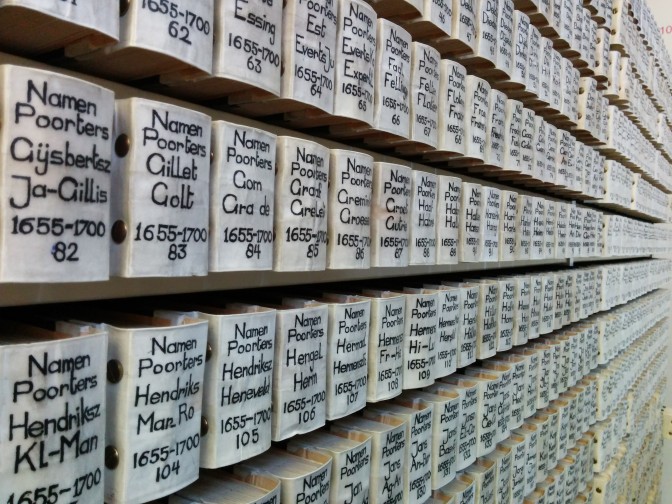Long before computer databases were invented, people created indexes. Examples of such “manual” indexes include:
- A list of names at the end of a book or register
- An index volume (repertorium) with abstracts of records created by a notary
- A list of grantors and grantees in the back of a deed register
- A register with muster roll numbers of soldiers in a regiment
- A list of incoming and outgoing letters of a government agency, organized by sender or recipient
- A card catalog created by volunteers in an archive that indexes a series of records.
In some cases, these hand-written or typed indexes have been scanned and can be found online. If you’re browsing a register that is not full-text searchable, check the first and last pages for an index, or look in the finding aid whether another call number has an index for the series. You can also contact the local archivist to ask if they know of any contemporary indexes that may be available.

Index of poorterboeken, Amsterdam City Archives. Photo by author.

